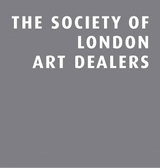Albert Gleizes (1881 - 1953)
- AVAILABLE ARTWORKS FOR SALE
For more available works please contact us on stern@pissarro.com or +44 (0)20 7629 6662.
Albert Léon Gleizes was born in Paris on December 8, 1881. He worked in his father’s fabric design studio after completing secondary school. While serving in the army, from 1901 to 1905, Gleizes began to paint seriously. In 1902, he showed Impressionist-style landscape painting at the Société Nationale des Beaux-Arts in Paris.
Gleizes was co-founder of and participated in 1903 and 1904 in the ‘Salon d'Automne’. As a member of the ‘Salon des Indépendants’, he had close contact to the artistic avant-garde. With several friends, including the writer René Arcos, Gleizes founded the Abbaye de Créteil outside Paris in 1906. This utopian community of artists and writers scorned bourgeois society and sought to create a non-allegorical, epic art based on modern themes. Influenced by Henri Le Fauconnier and Jean Metzinger he turned towards a geometrically simplified style in 1908-09 and produced the so-called "Paysages classiques". He joined the Cubist circle around Robert Delaunay in 1910. Soon he discovered his own pictorial language, however, which dismantles the objects and re-organises them rhythmically - like in Futurism. The following year he wrote the first of many articles. In collaboration with Metzinger, Gleizes wrote Du Cubisme, published in 1912.
Albert Gleizes's art theoretical discussions were continued in the group "La Section d'Or", which was founded by Jacques Villon the very same year. His ideas of creating a dynamics in Cubism inspired other painters such as Le Fauconnier, Roger de Fresnaye and Fernand Léger.
In 1914 Albert Gleizes was drafted to military service and travelled until 1919 to the USA, Canada, Cuba, the Bermudas and to Spain. His first solo show was held at the Galeries Dalmau, Barcelona, in 1916. After the war, Gleizes became deeply involved in a search for spiritual values, as reflected in his painting and writing and he tried to transfer Christian topics into the Cubist image language. In 1927 he founded Moly-Sabata, another utopian community of artists and craftsmen, in Sablons.
Later in his career Gleizes executed several large commissions, including the murals for the Paris World's Fair of 1937. In 1947 a major Gleizes retrospective took place in Lyon at the Chapelle du Lycée Ampère. From 1949 to 1950 Gleizes worked on illustrations for Pascal's Pensées. He executed a fresco, Eucharist, for the chapel Les Fontaines at Chantilly in 1952. Gleizes died in Avignon on June 23, 1953.
Read more
Gleizes was co-founder of and participated in 1903 and 1904 in the ‘Salon d'Automne’. As a member of the ‘Salon des Indépendants’, he had close contact to the artistic avant-garde. With several friends, including the writer René Arcos, Gleizes founded the Abbaye de Créteil outside Paris in 1906. This utopian community of artists and writers scorned bourgeois society and sought to create a non-allegorical, epic art based on modern themes. Influenced by Henri Le Fauconnier and Jean Metzinger he turned towards a geometrically simplified style in 1908-09 and produced the so-called "Paysages classiques". He joined the Cubist circle around Robert Delaunay in 1910. Soon he discovered his own pictorial language, however, which dismantles the objects and re-organises them rhythmically - like in Futurism. The following year he wrote the first of many articles. In collaboration with Metzinger, Gleizes wrote Du Cubisme, published in 1912.
Albert Gleizes's art theoretical discussions were continued in the group "La Section d'Or", which was founded by Jacques Villon the very same year. His ideas of creating a dynamics in Cubism inspired other painters such as Le Fauconnier, Roger de Fresnaye and Fernand Léger.
In 1914 Albert Gleizes was drafted to military service and travelled until 1919 to the USA, Canada, Cuba, the Bermudas and to Spain. His first solo show was held at the Galeries Dalmau, Barcelona, in 1916. After the war, Gleizes became deeply involved in a search for spiritual values, as reflected in his painting and writing and he tried to transfer Christian topics into the Cubist image language. In 1927 he founded Moly-Sabata, another utopian community of artists and craftsmen, in Sablons.
Later in his career Gleizes executed several large commissions, including the murals for the Paris World's Fair of 1937. In 1947 a major Gleizes retrospective took place in Lyon at the Chapelle du Lycée Ampère. From 1949 to 1950 Gleizes worked on illustrations for Pascal's Pensées. He executed a fresco, Eucharist, for the chapel Les Fontaines at Chantilly in 1952. Gleizes died in Avignon on June 23, 1953.

